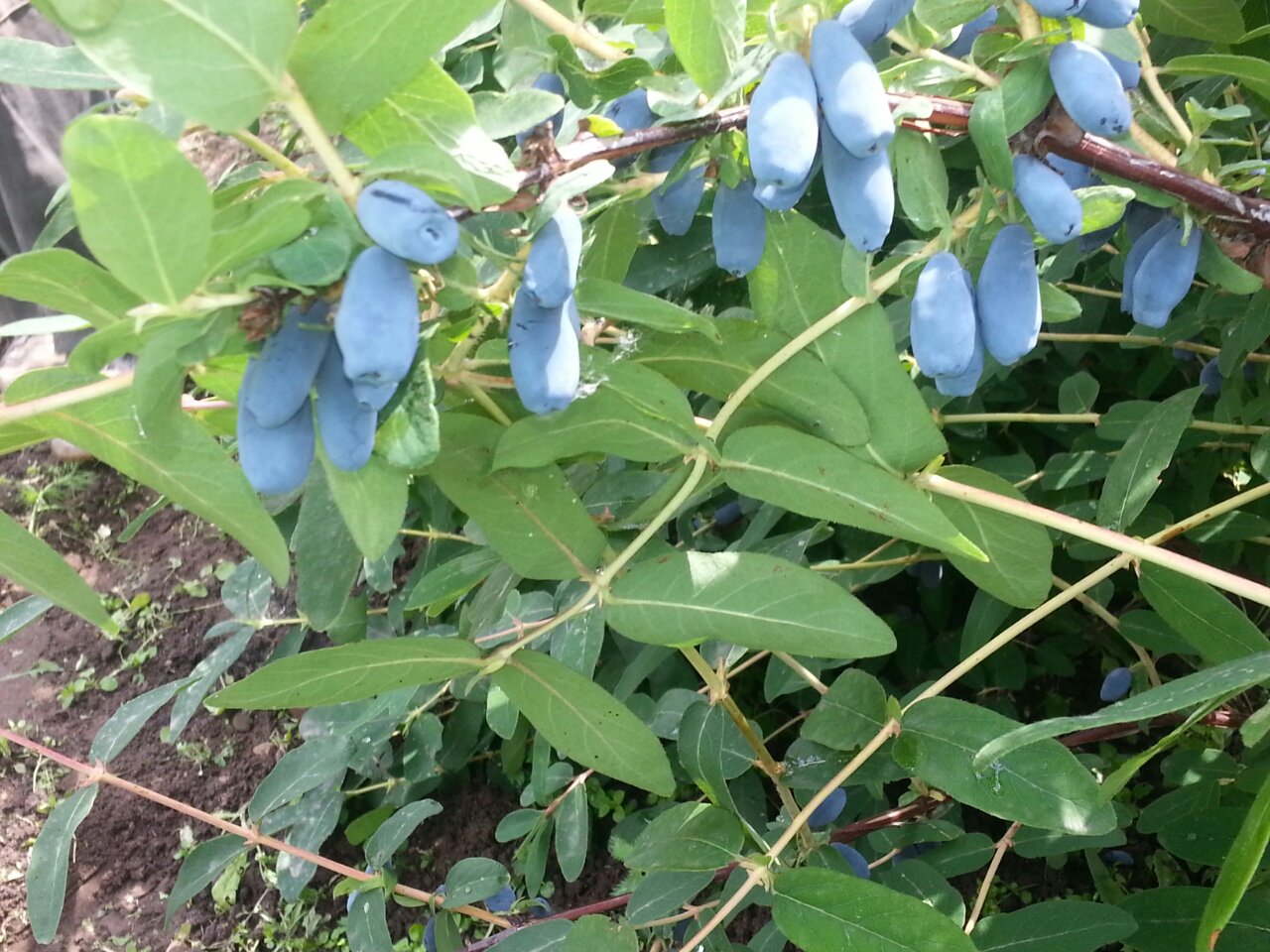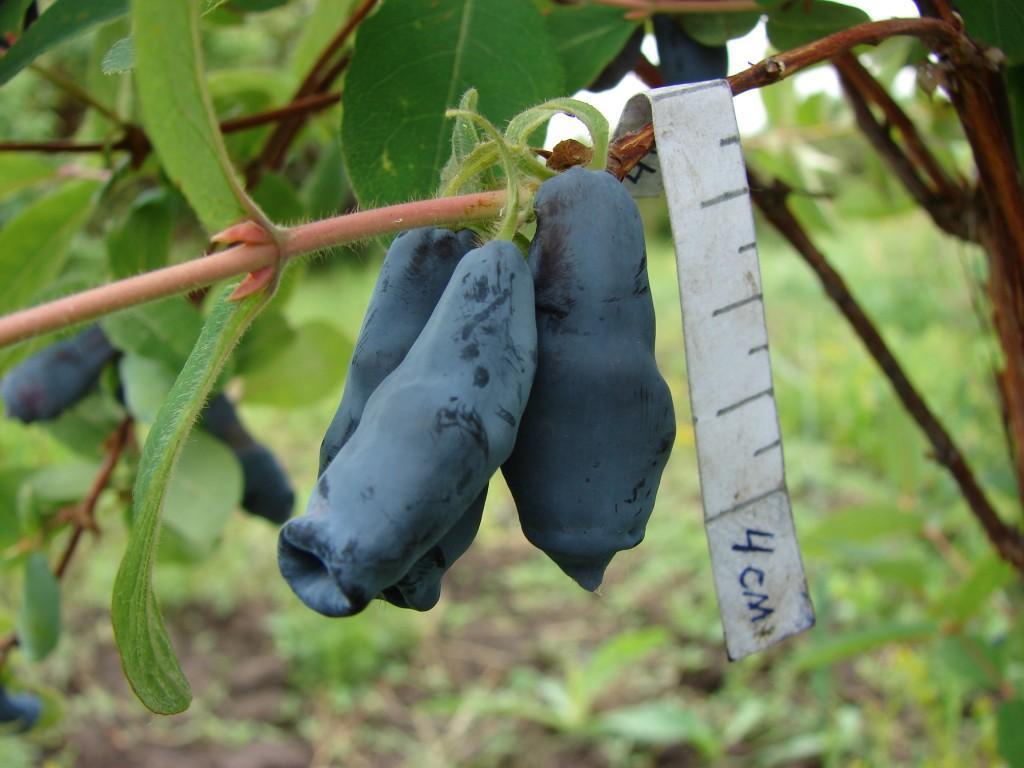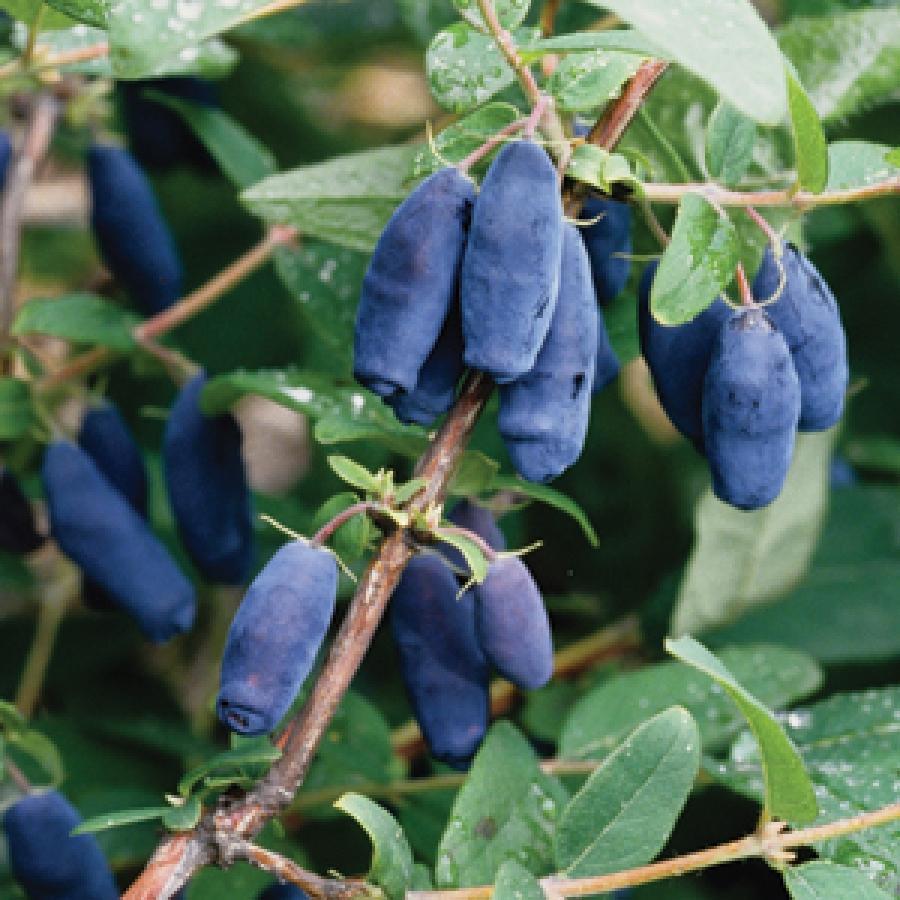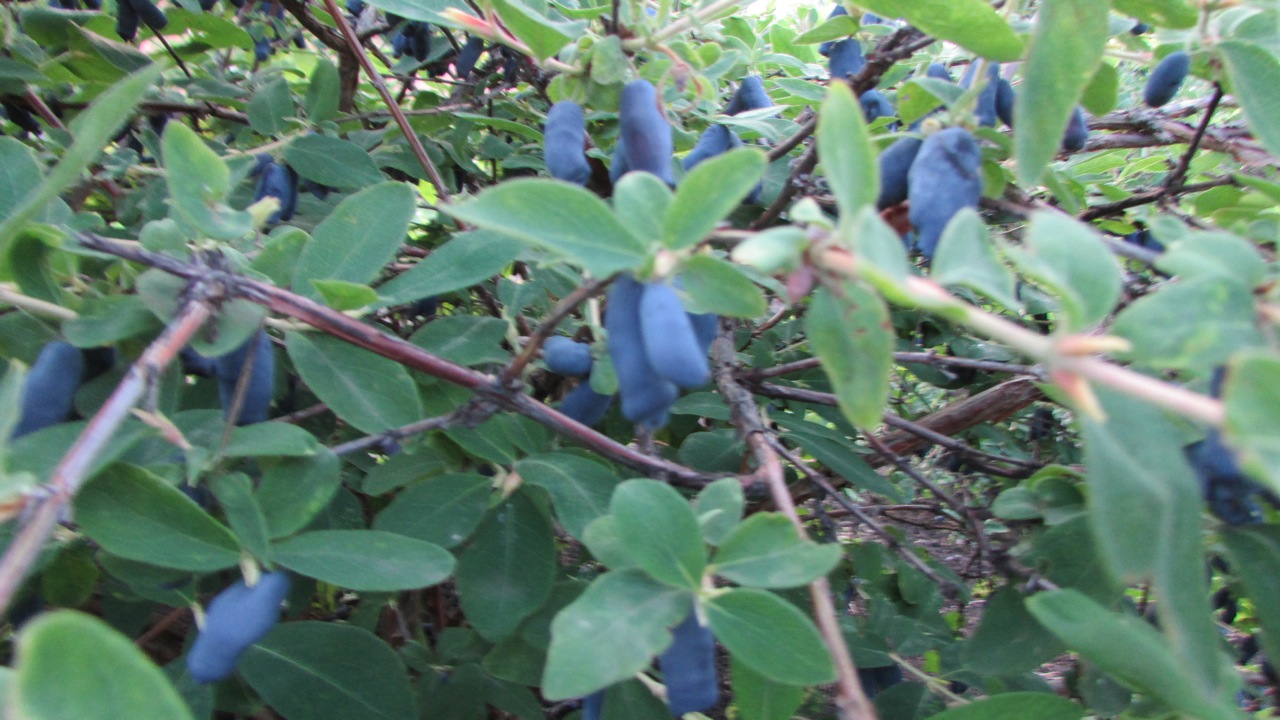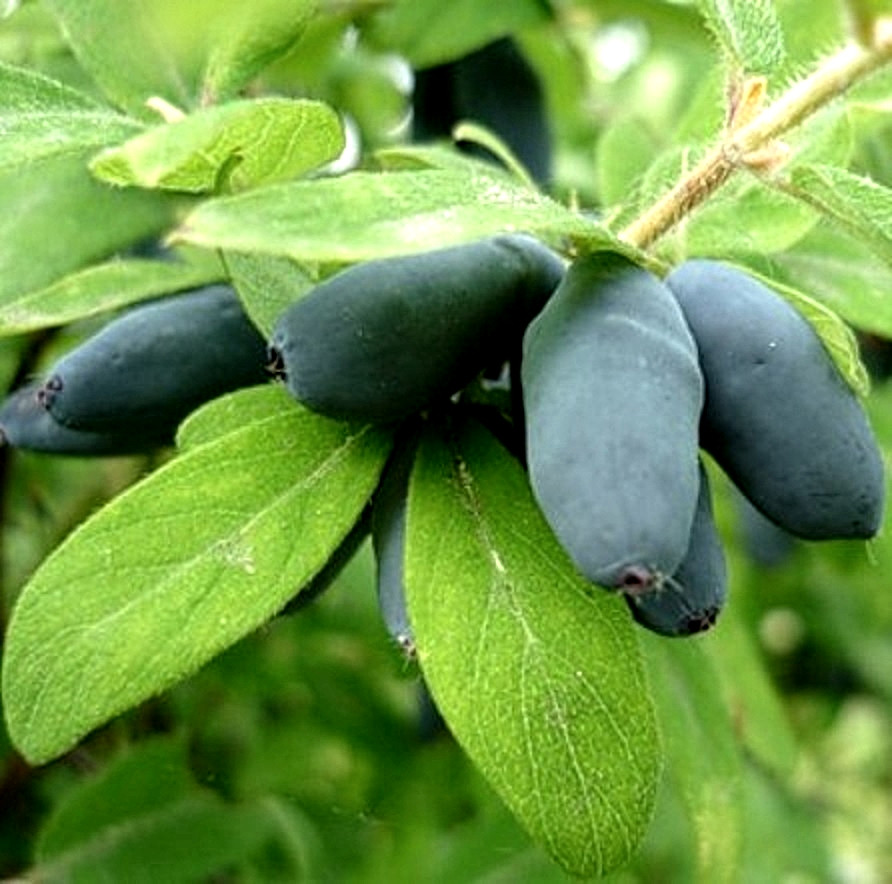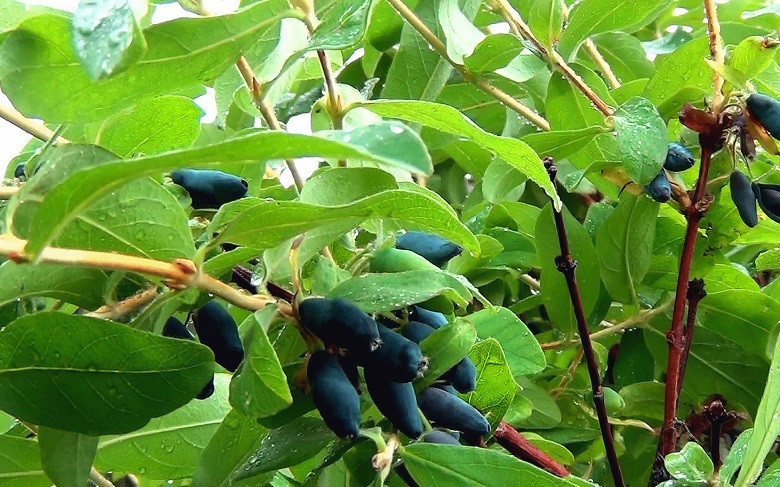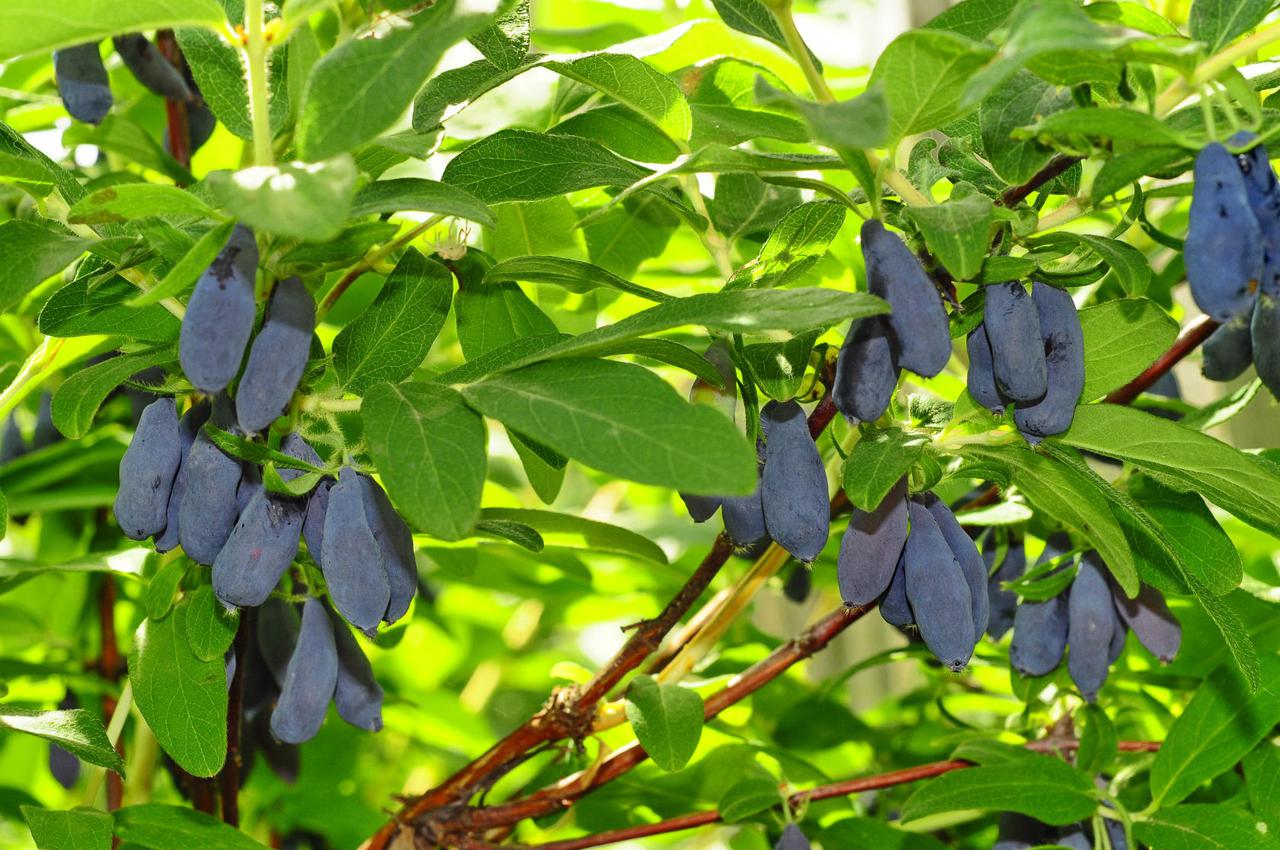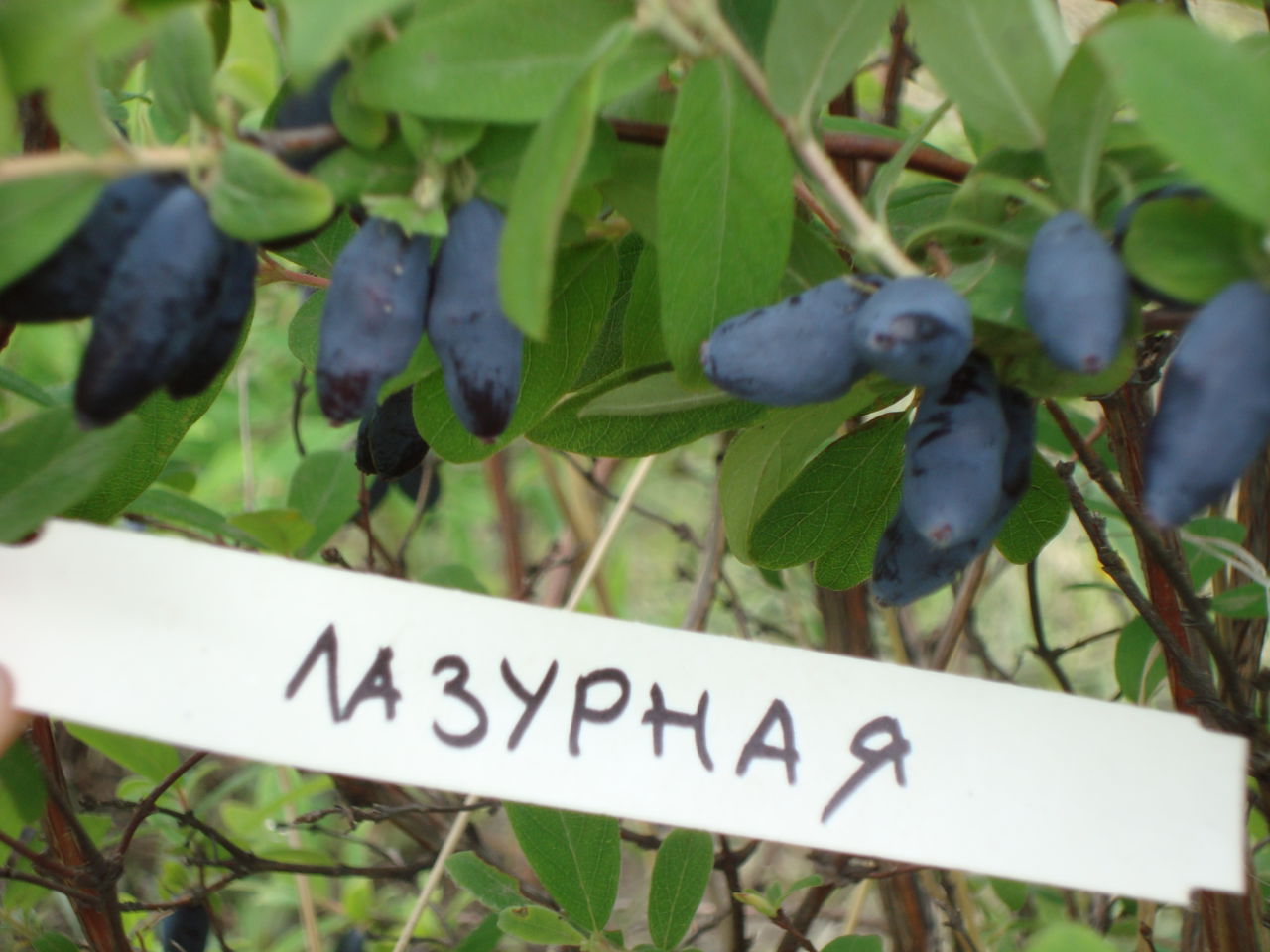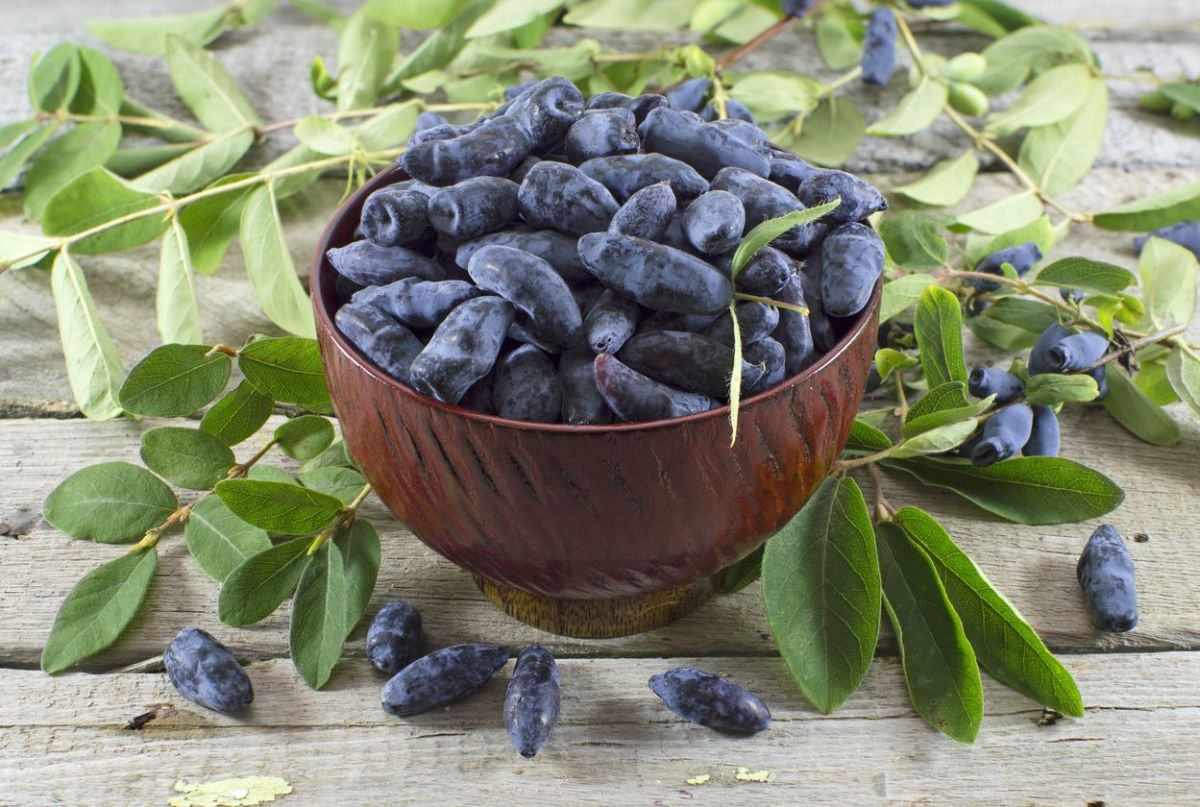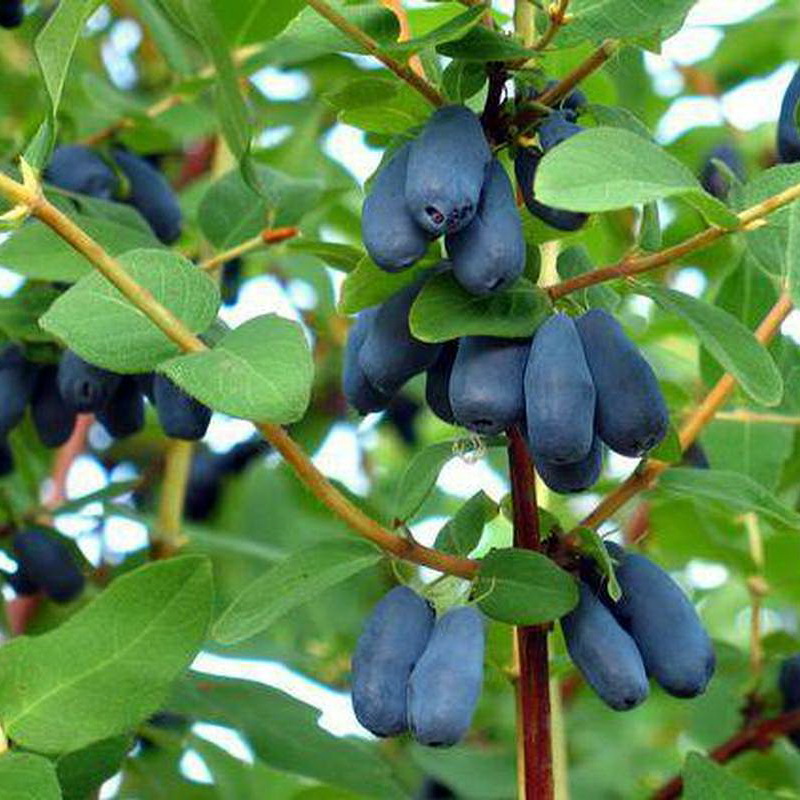Content:
This garden culture was developed relatively recently - at the beginning of the last century. Some varieties are decorative, with inedible fruits and are used exclusively for landscape decoration. But gardeners are most interested in honeysuckle, which gives an edible gray fruit. There are many varieties of honeysuckle, but not all are included in the official registers.
When choosing seedlings, farmers are guided by various criteria: the shape and size of mature bushes, the timing of fruiting, the size of berries and their taste, the principles of zoning, etc.
Plants for the garden by growth
When deciding which varieties of honeysuckle are the best, you should not ignore the size of the plants. On large farm plantations, where it is possible to install high trellises, they try to plant large or medium-sized bushes. Dacha sotkas are more suitable for compact, low plants.
Stunted honeysuckle
| Variety | Crown | Berry | Note |
|---|---|---|---|
| Long-fruited | Spreading | Weighing up to 1.3 g, sweet, no bitterness, no smell | Considered one of the best in performance |
| Darling | Medium spreading | 1.2 g, sweet and sour, not bitter, odorless | The berry does not crumble |
| Nizhny Novgorod early | Thick | 0.9 g, delicious, pear-shaped | Sings before everyone else |
| Gourmet | The apex is small, oval | 1 g, oval-elongated, sweet | Good fresh and homemade |
| Start | Flat-round, thick | 0.55 g, delicate taste with pronounced sourness | Attracts summer residents with unpretentiousness and decorativeness |
| Blue spindle | Straight, rare | 1.5 g, blue-wax spindle with sweet and sour relish | An early variety with high persistent characteristics, but with a lack of watering, the berries are bitter |
| Delicacy | Dense compact hemisphere | 0.8 g, obtuse oval with a dense skin, without bitterness, but with sourness | Yielding, winter-hardy fruit with the ability not to crumble |
Medium-sized
| Variety | Crown | Berry | Note |
|---|---|---|---|
| Altair | Rounded | up to 0.9 g, aromatic, sweetish-sour | With standard characteristics |
| Raisin | With poorly expressed spreading | 1.1 g, not bitter, sweet but not aromatic | |
| Lapis lazuli | Not sprawling, compressed | 1.4 g, tasty, not bitter, but no aroma | Large-fruited variety gives high yields under any conditions |
| Swan | Medium spreading | 1.2 g, sweet, with a pleasant aroma | High productivity is characteristic |
| Malvina | Oval-shaped | 1 g, pleasantly smelling, with a sour-sweet taste | Self-fertile variety |
| Pavlovskaya | Loose | 1.2 g, aromatic, sweet, sour | The composition contains a large amount of ascorbic acid (up to 82 mg%) |
| Siberian | Slight spreading | 1.4-1.5 g, large sweetish-aromatic fruit | It is appreciated for the size of the fruit and high yield. Suitable for growing regional strip with fairly low temperatures |
| Nightingale | Standard | 0.9 g, sugary, with sourness and a pleasant smell | Average vitamin C content |
| Souvenir | Dense, medium spreading | 0.9 g, sweetish, with a slight sourness, does not taste bitter or smell | Up to 84 mg% of ascorbic acid |
| Cubic zirconia | Weakly spreading | 1 g, tasty, does not taste bitter, does not smell | High amount of vitamin P (1100 mg%) |
Average growth and such varieties of honeysuckle: Gzhelka, Kingfisher, My Joy, Shahinya, Bachkarskaya, Roxana, Skoroplodnaya, Memory Kuminov, Voytek, Isaevskaya, Honey blue.
High varieties of honeysuckle
| Variety | Crown | Berry | Note |
|---|---|---|---|
| Selena | Average spreading | 1 g, sweet with sourness, slightly bitter | Record holder for vitamin P content (1830 mg%) |
| Sinilga | Spreading not much | 0.9 g, bitterness is mixed with sweet sourness | Fruits do not fall |
| Slav | Thick and highly spreading | 0.9 g, sweet and aromatic | |
| Fortune | Spreading | 1.5-1.8 g, dessert | Used in decorative landscaping |
| Titmouse | Rounded, dense, slightly pubescent | 0.9 g, pleasantly smelling, without bitterness, elongated oval with a thin skin | Almost does not pour. It goes not only in desserts, but also in the design of hedges |
| Viola | Thick, oval | 1 g, tart-freshish taste | Universal applicability |
| X | Reverse conical | 0.5 g, sweet, with sourness, thin skin | Fertility is low, shedding is average. Recommended for growing in Siberia |
| In memory of Gijuk | Reverse conical, medium thickened | 0.82 g, tart sweetness with a slight sourness | Dessert variety. Practically does not crumble. Frost resistant |
| Parabel | Conical shape | 0.85 g, spindle-shaped, with a pleasant delicate taste | Pollination requires a different variety |
| And here | Sprawling, thickened | 0.9-1 g, purple-waxy cylinder, sweet with sour taste, high content of ascorbic acid | Not picky about agricultural technology. Resistant to diseases and shedding. Calmly tolerates frosts down to -45 degrees |
Altai, Vasilievskaya, Mailon, Success, Ussulga also belong to tall honeysuckle.
How to choose the variety of honeysuckle to taste
Sweet, no sourness
| Name | Berry weight, g. | Features: |
|---|---|---|
| Amur | 1,2-1,7 | Black-purple berries are fragrant with a dessert taste. Fast growing variety, pollinator required |
| Duet | 1,2-1,5 | Barrel-like, with a deep blue wax coating. Nutritious, high in macronutrients |
| Masha | 1.2 | Blue, broad spindle with medium ripening. There is a slight bitterness in the sweet taste. The berry does not pour |
| Princess | 1.5 | Blue spindle with a wax coating. Falls loose |
| Diana | 1.4 | Blue-violet weakly bumpy jug. Does not crumble. You can take up to 3.5 kg from a bush |
To the list of richly sweet varieties of honeysuckle without bitterness, it is worth adding the following: Smuglyanka, Slastena, Elizaveta, Hanibi, distinguished by their high taste.
Sweet, with a subtle sourness
| Name | Berry weight, g. | Description |
|---|---|---|
| Kuminovka | 1.1 | The large berry has a dense skin, it does not crumble from the bush. One bush gives fruits up to 2 kg |
| Tomichka | 01.02.2018 | Jug-like berry, black and blue, irregular, transportable |
| Commonwealth | 1.1 | Refreshingly pleasant fruit relish with citrus-like bitterness. Delicately melting pulp, covered with the finest skin. The berry crumbles quickly |
| Bazhovskaya | 0.65 | The fruit is barrel-shaped, bumpy, with a delicate skin. The taste has a pleasantly refreshing effect. Grown for processing. Zoned for the Urals |
| Sineglazka | 0.7 | Elongated oval fruits with dense skin. They crumble heavily. Go to processing and for making desserts |
Those who do not like sugary sweetness, and prefer a slight sourness in fruits, should pay attention to such honeysuckle varieties: Modri Triumph, Indigo, Amazon, Barballetta, Yugan (a new word in selection), Giant's daughter, Blue Velvet, Eternal Call, Garland , Bird, Tatiana.
Sweet, with pronounced sourness
| Name | Berry weight, g. | Features: |
|---|---|---|
| Gerda | 0,7-0,9 | The berry is barrel-shaped, almost does not crumble. Painted in bluish blue |
| Vasyugan | 0.81 | The fruit is wide, amphora-shaped, thin-skinned. Crumbles heavily. Goes as food and is processed, and also used in landscape gardening. Zoned under Siberia |
| Narymskaya | 1.1 | Elongated sourish ovals. Ripen early, crumble medium |
| Chulymskaya | 1.2 | A spindly berry with a thin skin and refreshing relish. Does not crumble, is universal in use |
| Dove | 1.6 | The elongated bluish-black fruits have a pleasant bitterness. Delicate pulp is used in healing recipes |
Sour taste is the main feature of many varieties of honeysuckle.Therefore, the list in the table can be supplemented with the following names: Assol, Negritanka, Kurortnaya, Pitcher, Bell, Young lady, Vlada, Strezhevchanka, Kunashirskaya, Kamchatskaya, Avacha, Pride of Bachkar (or Bruzhmel), Swallow, Zvezdochka, Iolanta, Blue Cliff, Chelyabinka ...
Sweet, with a strawberry flavor
| Name | Berry weight, g. | Features: |
|---|---|---|
| Strawberry | 2 | Delicious jug-shaped blue berries with a characteristic aroma, practically do not crumble. Grown for versatile use |
| Volkhova | 0,6-0,8 | Small, oval-elongated sweet fruits, have a thin skin. Scattered poorly, a fairly productive variety |
| Cinderella | 1-1,4 | The fruit has a black, with a bluish bloom, the skin, a pleasant pulp and a tantalizing smell of strawberry aroma |
| Penguin | 1.5 | Rounded barrels with a delicate sour-sweet pulp and thin skin, pleasantly refreshing, do not crumble |
Unfortunately, there are still few varieties with a strawberry aroma and an unusually pleasant taste in the selection lists. But, using any variety from the table above, as a pollinator, you can give other honeysuckle interesting tasting qualities.
How to get a big harvest
Honeysuckle is an unpretentious plant and can develop in one place up to 80 years. But in order for the bush not only to decorate the landscape, but also to begin to give yields, one should take into account the peculiarity that the culture, in general, is not self-fertile. To wait for the berries, not just a few honeysuckle bushes are planted on the site, but different varieties adapted to each other.
Pollination compatibility of some varieties
| dusting agent | For which varieties |
|---|---|
| Amphora | Nymph, Cinderella, Bakchar giant, Morena |
| Blue spindle | Malvina, Bluebird, Swan, Leningrad giant |
| Blue bird | Malvina, Morena, Blue spindle |
| Cinderella | Bluebird, Blue Spindle |
| Malvina | Leningrad giant, Swan, Bluebird, Morena |
The table shows that several different pollinators can be selected for one variety. At the same time, the Blue Spindle and the Blue Bird perfectly pollinate each other. But the honeysuckle of the Malvina variety is self-pollinated.
It is not worth planting pollinating plants at a great distance from the main bush, otherwise you will not wait for the harvest. The optimal gap is 1.5 m.
But even, having provided fruit ovaries, one should not ignore the elementary rules of agricultural technology that can affect the harvest:
- the culture loves light loamy soils and black soil, but on sandy soils it produces worse;
- when planting, it is necessary to add nutrients to the hole: humus, compost, you can add a little Kemira (universal fertilizer);
- it is impossible to overfeed the honeysuckle, otherwise all the power will go into the growth of green mass, and not into the formation of fruits; therefore, you should not overload the bushes with fertilizers annually - it is enough to apply organic matter every 3 years, 5 kg per bush;
- the correct location of the root collar is also important - it cannot be buried below 7 cm, otherwise fruiting will be weak;
- honeysuckle loves the sun, but the bush needs it only in the morning; therefore, when choosing a landing site, take into account the possibility of afternoon shading;
- the formation of a bush is a prerequisite for caring for honeysuckle; about 15 branches of different ages should be kept on the plant; thinning allows you to lighten the center of the bush, this is a good guarantee of a large harvest;
- the extreme branches are required to be slightly deflected to the side and fixed with hooks; this will allow each berry to warm its "sides" under the rays of the sun;
- we must not forget about mulching - by covering the ground under the bushes with straw or dry grass, the gardener provides moisture retention and gets rid of weeds.
Whichever variety is grown, all basic work (pruning, transplanting) is best done in late autumn. The growing season for honeysuckle begins early, so the plant does not like spring troubles.
